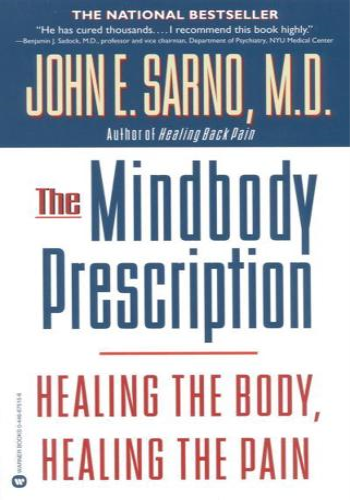Chapter 1: The Mindbody Prescription
In the first chapter of The Mindbody Prescription, Dr. Sarno introduces the reader to the concept of Tension Myositis Syndrome (TMS), an illness caused by psychological factors rather than a physical condition. He explains that the condition is caused by repressed anger, anxiety, and sadness, leading to physical symptoms such as chronic lower back and neck pain, shoulder pain, headaches, and stomach problems. He also explains that the cause of TMS is unconscious to the sufferer and that only 10-percent of sufferers are aware of the psychological root of their pain.
Dr. Sarno provides a real-life example of TMS in the first chapter. He introduces the reader to a woman named Cindy, who sought physical therapy for her lower back pain. After several sessions, Cindy’s pain persisted, prompting her to seek the advice of Dr. Sarno. Through exploring Cindy’s personal history, the two discovered strong underlying emotional issues that had been causing Cindy’s chronic physical pain. After understanding the emotional root of her pain, Cindy began to understand that she had been unconsciously pushing away her feelings, resulting in the physical pain. Once she realized this, Cindy began to face and work through the emotions she had been suppressing and her physical pain subsided.
Chapter 2: The Anatomy of Healing
In the second chapter of The Mindbody Prescription, Dr. Sarno explores how the mind-body duo works together to heal physical and emotional pain. He explains that physical pain, or “stress signals,” are sent to the brain to alert the sufferer to an unresolved psychological issue. By recognizing these signals and working through the emotional causes, the physical pain can be relieved. He also explains that the body-mind connection is constantly in flux, constantly influencing and being influenced by the other.
To illustrate this concept, Dr. Sarno tells the story of Tony, a man who developed chronic shoulder pain after a hard day of work. After seeking out the help of an orthopedic surgeon, Tony still experienced pain but was feeling better after physical therapy and medications. He believes that the physical therapy was responsible for this relief, but it was actually the power of his mind to heal him. Tony had been suppressing emotions concerning his relationship with his son, and when he was finally able to confront and work through these feelings, the physical pain disappeared.
Chapter 3: New Directions in Healing
In the third chapter of The Mindbody Prescription, Dr. Sarno provides a framework of how to manage TMS symptoms. He suggests using counseling, psychotherapy, and life-style changes to target and tackle the underlying psychological issues causing the physical pain. He explains that by uncovering and addressing the subconscious causes of the physical pain, sufferers can develop a deeper understanding of their pain and ultimately recover.
For example, Dr. Sarno tells the story of Eric, who sought out counseling to resolve his chronic pain issues. Eric realized that his pain was not only physical, but also emotional. Through the counseling, Eric was able to develop an understanding of the emotional trauma he had been suppressing, from which his physical pain had been stemming. With these deeper insights, Eric was able to develop a plan to tackle the root of his physical symptoms and work towards healing.
Chapter 4: The Prescription for Healing
In the fourth chapter of The Mindbody Prescription, Dr. Sarno outlines the steps he believes are necessary to reduce and eliminate TMS symptoms. He emphasizes the importance of consciously reflecting on one’s emotions and allowing oneself to feel their pain, rather than burying it. He also explains that one should avoid medical interventions for TMS symptoms, such as physical therapy or medications, as these may only offer temporary relief and potentially complicate the healing process.
To illustrate this process, Dr. Sarno provides a real-life example. Sarah, a young woman suffering from chronic lower back pain, had been undergoing physical therapy but her pain only worsened. She consulted with Dr. Sarno, and through addressing her unconscious anger and guilt, she was able to heal herself without medical intervention. Sarah learned to allow herself to feel her pain and to consciously reflect on her emotions. With practice and time, she was able to reduce and eventually eliminate her pain symptoms.







